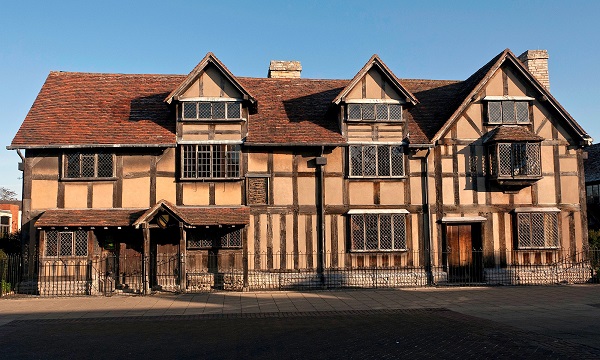
Tourism, literary sector
This type of tourism deals with places and events from literary texts as well as the lives of their authors.
Advertisement
This could include visiting particular places associated with a novel or a novelist, such as a writer's home, or grave site, following routes taken by fictional characters, visiting places mentioned in poems, as well as visiting museums dedicated to specific writers, works, regional literatures, and literary genres.
Some describe it as the practice of visiting cities and sites related to works of fiction and their authors. If you remember Canterbury Tales, you’d recognise that, yeah, a band of travellers were on the road engaging in the literary enterprise of a sort.
Tourism
Some scholars regard literary tourism as a contemporary type of secular pilgrimage. There are also long-distance walking routes associated with writers, such as the Thomas Hardy Way.
Literary tourists are specifically interested in how places have influenced writing and at the same time how writing has created a place.
In order to become a literary tourist you need only book-love and an inquisitive mindset; however, there are literary guides, literary maps, and literary tours to help you on your way. There are also many museums associated with writers, and these are usually housed in buildings associated with a writer's birth or literary career, such as their home. We shall end this piece with a few of such places, all unfortunately out there.
While most literary tourism is focused on famous works, more modern works that are written to specifically promote tourism are called tourism fiction. Modern tourism fiction can include travel guides within the story showing readers how to visit the real places in the fictional tales.
With recent technological advances in publishing, digital tourism fiction books can even allow literary tourists to follow direct links to tourism websites related to the story.
This can be done on new e-reading devices like the Kindle, iPad, iPhone, smart phones, tablets, and regular desktop and laptop computers. These links within the story allow readers to instantly learn about the real places without doing their own web searches.
The first classic novel to take advantage of tourism fiction technology was F. Scott Fitzgerald's This Side of Paradise: Interactive Tourism Edition. The tourism edition offered web links to tours of Princeton University, where Fitzgerald attended in real life and where the fictional protagonist in the novel Amory Blaine attended.
In addition to visiting author and book sites, literary tourists often engage in bookstore tourism, browsing local bookshops for titles specifically related to the sites as well as other regional books and authors.
Combining literature with travel and cultural experiences, literary tourism is by no means a recent occurrence and has been practiced for several centuries.
The use of electronic devices for participating in the literary tourism experience has become popular and has added some new twists to this form of tourism.
An interest in travelling to places associated with poets and novelists grew in the 19th century, when according to historical accounts, curious travellers began visiting the homes, graves and favorite haunts of famous writers. Travellers also visited the sites and cities described in famous poems and novels.
During this time, Stratford, England was memorialised for Shakespeare, while Abbotsford, England, was venerated for Sir Walter Scott. The Bronte sisters were remembered for their home at Haworth, England.
Travel guides in some of these novels allow the reader to visit sites remotely or gather information for a vacation. Some electronic literary tourism novels encourage the readers to visit a city by involving them in a game in which points are given for visiting different locations.
Crossing the boundaries between literature and cultural studies, literary tourism invites readers to make fictional experiences come alive. Literary tourism enables travellers to immerse themselves in the local culture, while increasing their knowledge about authors and literature.
To cater to the tastes of this specialised group of travelers, many cities have taken advantage of this phenomenon by creating walking and cycling tours of famous writers' homes, the places where they wrote, and taverns they may have visited.
For example, London, England, has tours that honour Arthur Conan Doyle's Sherlock Holmes. One tour includes a house dedicated to fictional characters from the novel. In Ireland, a Dublin Literary Pub Crawl invites tourists to walk in the shoes of writers like James Joyce, Oscar Wilde, George Bernard Shaw and W.B. Yeats. The walking tour is guided by actors, and guests are invited to participate in a literary quiz with prizes.
Other examples are: in Oxford, Mississippi, home to the late literary giant William Faulkner. Faulkner's home is open to the public. It is a white mansion with beautiful tall trees leading up to the porch. It is treated like a museum, and fans come from all over just to see what life was like for him here.
They also visit his grave nearby. They go to areas that he used to visit, and they ask the locals for any extra information they can provide about him.
I guess some people are huge fans of writers and books in the same way that some are devoted to music and singers like Elvis




